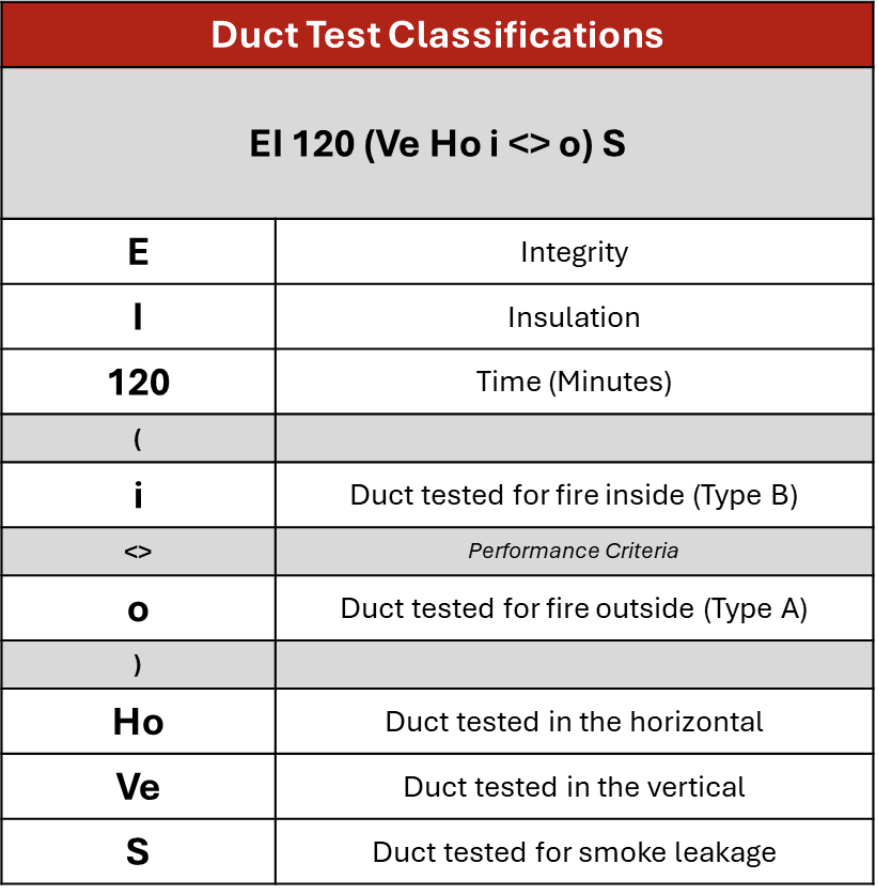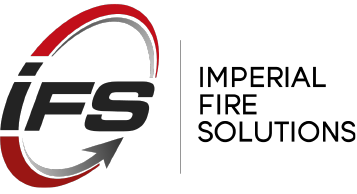Legislation
Why Choose Fire Resistant Ductwork?
Fire resistant ductwork plays a crucial role in protecting both the structure and its occupants during a fire. According to the guidance outlined in Approved Document B and BS EN 9999, fire resistant duct systems help control the spread of smoke and flames throughout the building, ensuring that escape routes remain safe and that fire hazards are minimized.
Benefits of Our Fire-Resistant Ductwork:
- Benefits of Our Fire Resistant Ductwork: We ensure all our fire resistant ductwork solutions meet the strict requirements of Approved Document B and BS EN 9999, providing peace of mind that your building is fully compliant with the latest fire safety standards.
- Fire Containment: Our fire resistant ducts are engineered to prevent the rapid spread of fire and smoke, ensuring that any fire remains contained to a specific area and does not endanger other parts of the building.
- Durability and Reliability: Made from high-quality materials, our fire-resistant ducts are engineered to withstand extreme temperatures, maintaining their integrity and performance during a fire.
- Protects Occupants and Property: By limiting the movement of smoke and harmful gases, our ductwork helps safeguard the health of occupants and reduces the overall damage to your building.
Approved Document B (Building Regulations 2010 – Fire Safety)
To comply with Building Regulations, it is necessary to follow the correct procedures and meet the technical performance requirements.
Restricting the spread of flames through internal linings of the building, the building fabric should make limited contribution to fire growth, including a low rate of heat release.
It is particularly important in circulation spaces, where linings may offer the main means by which fire spreads and where rapid spread is most likely to prevent occupants from escaping.
This document provides guidance on the fire safety measures that need to be implemented in buildings to protect life and property. Fire resistant ducts are a critical component of this guidance, as they help prevent the spread of fire and smoke through the building’s ventilation system.
Our fire resistant ductwork systems meet the standards set out in this document by:
- Ensuring fire resistance for the required duration (usually 30, 60, 90, or 120 minutes, depending on the building’s use and size).
- Providing smoke control to allow for safe evacuation.
- Being constructed from materials and coatings that are fire-rated to the appropriate standards.
Section 9.12 of Approved Document B: 2010 (2019 edition) states the following:
If air handling ducts pass through fire-separating elements, the fire performance of the elements should be maintained using one or more of the following four methods. In most ductwork systems, a combination of the four methods is best.
- Method 1 – thermally activated fire dampers.
- Method 2 – fire resisting enclosures.
- Method 3 – protection using fire resisting ductwork.
- Method 4 – automatically activated fire and smoke dampers triggered by smoke detectors
BS EN 9999:2017
The above methods are also identified in clause 32.5.2.1 of BS 9999:2017 Code of Practice for Fire Safety in the design, management and use of buildings.
BS EN 9999 provides the design criteria for fire safety in buildings, including specific guidelines on ventilation systems and fire resistant ducts. This European standard ensures that fire resistant ductwork systems are:
- Tested and certified to withstand high temperatures.
- Designed to provide effective smoke extraction and ventilation in case of fire.
- Built to preserve the structural integrity of the ductwork during a fire.
Duct Test Classifications
Where possible, fire resistant ductwork systems should be classified to the following:
- BS EN 13501-3:2005 + A1:2009 for Ventilation ducts.
- BS EN 13501-4:2016 for Smoke Extract ducts.
Classification reports provide a clear way of displaying the classification of a product based on the relevant BS EN fire tests.
Classification would typically be detailed as:

Integrity (E) – This is assessed throughout the test and failure is deemed to occur when one or more of the following aspects take place on the unexposed side.
- Volume flow rates in excess of given values.
- Ignition of a cotton pad.
- Formation of cracks or openings.
- Sustained flaming on the non-exposed side.
- Cross sectional area and mechanical stability (10% reduction only)*.
*Smoke Extract ducts only.
Insulation (I) – This is assessed throughout the test and failure is deemed to occur when the thermocouples on the unexposed side of the furnace reach 140°c as an average or 180°c as maximum.
A roving thermocouple is also used to locate points of high temperature not covered by the fixed thermocouples, at locations where the duct is outside the furnace only.
For ducts with combustible linings (kitchen ducts) additional ‘T3’ thermocouples shall be used, located inside the duct, inside the furnace. Failure for these thermocouples is deemed to occur at 140°c as an average or 180°c as maximum.
Please note that on a BS EN 1366-8 test, the application of the thermocouple is optional for the manufacturer to request them, and they will not be used for classification.
Smoke Leakage (S) – Failure for this criterion shall have occurred on ventilation ducts if the flow rate for type A duct during the test exceeds 10m³/(m²h), related to 20°c and 1013mbar, related to the internal surface area of the duct inside the furnace.
BS EN 1366-1:2014+A1:2020
This test standard for ventilation ducts within the Direct Field of Application (DIAP) includes protocols for ducts with combustible linings (kitchen extract ducts).
The Direct Field of Application covers rectangular ducts up to 1250mm wide and 1000mm high, and circular ducts up to 1000mm diameter.
Ducts are tested at extreme temperatures for integrity and insulation to the standard time/temperature curve (ISO 834) as defined in BS EN 1363-1:2020 section 5.1.1.
Tests to this test standard are require before proceeding to testing to the BS EN 1366-8 test standard.
BS EN 1366-5:2021
BS EN 1366-5 is the British and European standard outlining fire resistance testing for service ducts and shafts used in buildings. This ensures the protection of life-safety systems from a fire that may compromise them, or protecting the building from a fire caused by the services contained within them.
The British standard governing the protection of life safety systems (BS 8719:2020) dictates an additional level of protection for high voltage (HV) cables used. The requirement is for thermocouples (T3) to be placed within the service duct or shaft, in the centre of the furnace, providing temperature readings. The criteria for this being the same as the combustible lining of ventilation ducts, where failure occurs at 140°c as an average or 180°c as maximum.
Service ducts and shafts are classified to BS EN 13501:2023
BS EN 1366-8:2024
This test standard for smoke extraction ducts can only be performed after successful testing of ventilation ducts tested to BS EN 1366-1. This duct is referred to as duct C.
The Direct Field of Application covers rectangular ducts up to 1250mm wide and 1000mm high, and circular ducts up to 1000mm diameter.
Ducts are tested at extreme temperatures for integrity and insulation to the standard time/temperature curve (ISO 834) as defined in BS EN 1363-1:2020 section 5.1.1. The test standard has varying pressure levels from Level 1 detailed with Table 1:
Table 1 – Differential pressures between inside and outside the duct for smoke
| Pressure levels | Operating differential pressure at ambient temperature Pa | Differential pressure for fire test and pre-test calibration Pa |
|---|---|---|
| 1 | -500 | -150 |
| 2 | -1000 | -300 |
| 3 | -1500 | -500 |
The test criteria under fire conditions include:
- Leakage (Integrity), which shall not exceed 10 m3/h per m2 of the internal surface area.
- Mechanical stability. Failure is deemed to occur if the duct within the furnace collapses in a manner that restricts the flow of air preventing its intended function.
- Maintenance of cross-sectional area. This shall not decrease more than 10 % during the test.
- Insulation. The test specimen shall be insulated to the same level as tested with the particular method used within the required precursor BS EN 1366 –1 tests with the Part 1 tests demonstrating performance.
- Smoke Leakage – under fire conditions 5 m3/h per 1m2 should not be exceeded.
BS EN 1366-9:2024
Part 9 of the BS EN 1366 series covers the testing of smoke control duct sections used within one fire compartment (single compartment smoke extraction duct). In addition to the requirements of BS EN 1366-1, the pass criteria include the assessment of leakage by means of analysing the oxygen content of the atmosphere in the duct, and the preservation of the cross-sectional area both within and outside the furnace.
The Direct Field of Application covers rectangular ducts up to 1250 mm by 1000 mm and a diameter of 1000mm.
